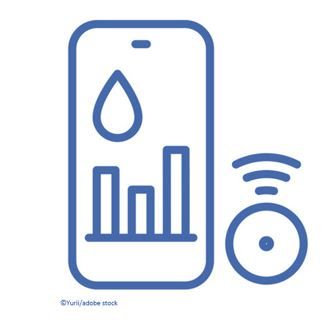FreeStyle Libre 3 CGM Linked with Reduced Hospital Admissions in Patients with T2D

Use of a continuous glucose monitoring (CGM) system significantly reduced the rate of hospital admissions for acute diabetes-related events (ADEs) in persons with type 2 diabetes (T2D) taking once-daily basal insulin, according to study results announced this week by Abbott, manufacturer of the FreeStyle Libre CGM system.
The retrospective Real-World Evidence of FreeStyle Libre (RELIEF) study found that T2D patients using the FreeStyle Libre system experienced 67% fewer ADE-related hospitalizations overall 1 year after initiating treatment with the CGM. RELIEF investigators write in the study abstract that the reductions were driven by 75% fewer hospitalizations for diabetic ketoacidosis (DKA), with a 44% reduction in admissions for severe hypoglycemia. Moreover, the pattern of reduced ADEs persisted after 2 years of FreeStyle Libre CGM use with rates of DKA reduced further by 43%. Of particular note, according to the authors, the reductions were observed among patients treated by either a primary care practitioner or a diabetes specialist.
INSULIN AND T2D
Insulin therapy is often required in persons with T2D to reach therapeutic glycemic targets, but the treatment is linked to ADEs that can be dangerous and potentially fatal, particularly in older adults. Research shows that patients with T2D who begin insulin therapy are at 3-fold greater risk of experiencing hypoglycemia, according to Abbot. Further, patient fear of hypoglycemia is recognized as a barrier to treatment intensification and to medication adherence. The findings from RELIEF, Abbott says, suggest that helping patients reduce the incidence of ADEs may reduce fear and help support better outcomes.
In most European countries, as in the US, reimbursement for CGM devices is restricted to persons with type 1 diabetes and to only those with T2D who require multiple daily injections of insulin or are otherwise unable to control serum glucose levels.
Commenting on the findings from RELIEF in the Abbott press statement lead study author professor Jean-Pierre Riveline said, "The reductions are similar to the results seen among the larger cohort of people with Type 2 diabetes who were receiving multiple daily injections, suggesting that FreeStyle Libre technology therapy should be proposed as part of individualized care for patients with Type 2 diabetes on basal-only insulin, not just people on intensive insulin therapy." Riveline is a professor at the Centre Universitaire du Diabète et de ses Complications, Hôpital Lariboisière, in Paris.
FRENCH NATIONAL DATABASE
Data for retrospective substudy of RELIEF was drawn from the French national health claims database that covers the country’s entire population (~66 million) and included all citizens with T2D taking basal insulin only who received a first reimbursement of FreeStyle Libre between August 1, 2017 and December 31, 2018, (the CGM was approved for reimbursement in France in June 2017). Of the final cohort of 5933 individuals, 78.9% were receiving once-daily basal insulin and other oral antihyperglycemic medications, write authors in the abstract. Investigators reviewed claims data for the 12 months before and up to 24 months after FreeStyle Libre initiation. Hospitalizations for ADEs were identified using ICD-10 codes as main or related diagnosis.
The third-generation FreeStyle Libre CGM 3 system was cleared by the US Food and Drug Administration in May 2022.
The RELIEF study findings were published in the Journal of Diabetes Technology & Therapeutics and presented at the 58th Annual European Association for the Study of Diabetes (EASD) meeting.